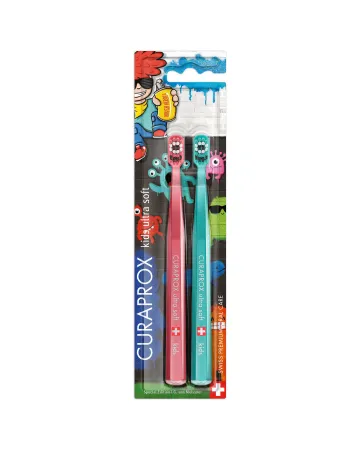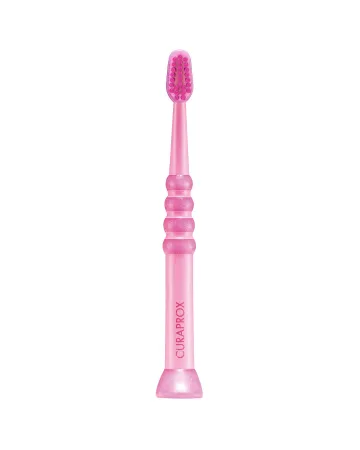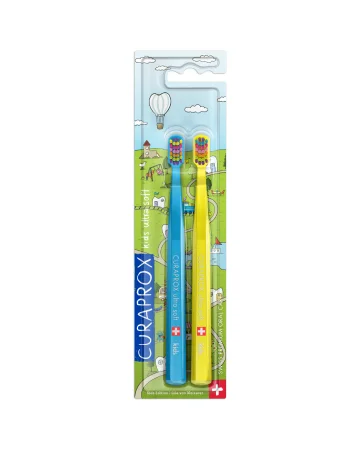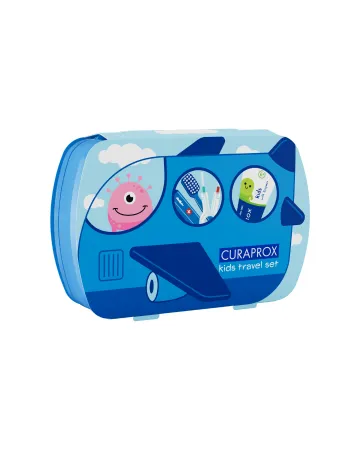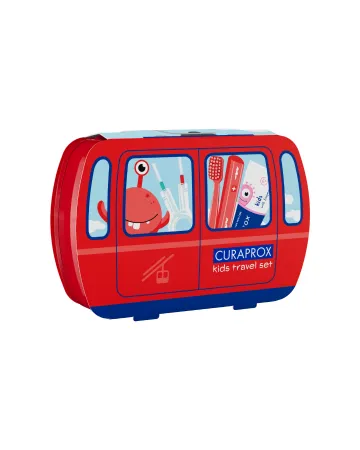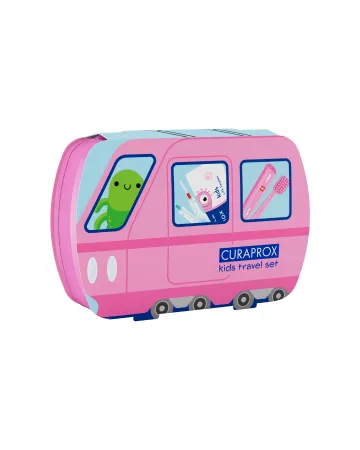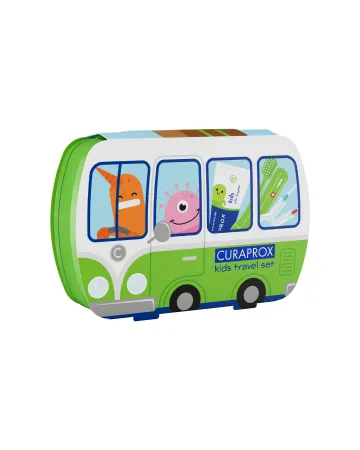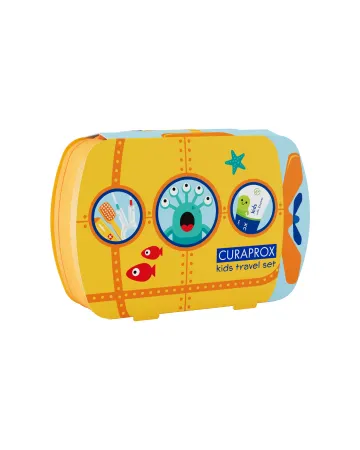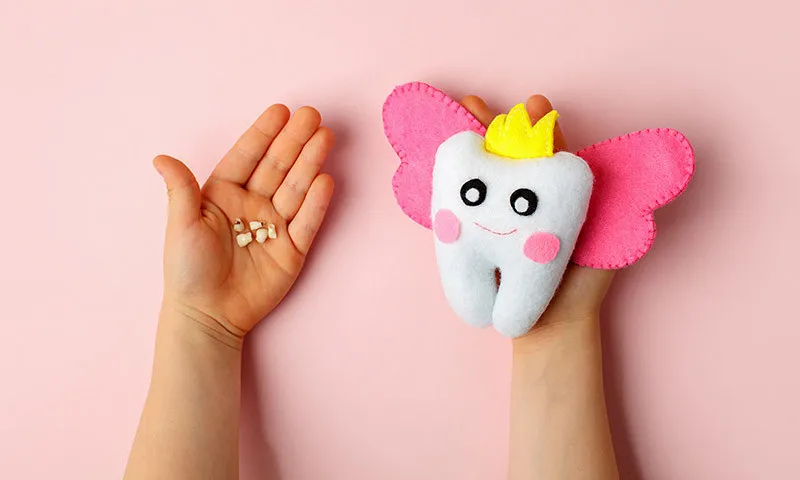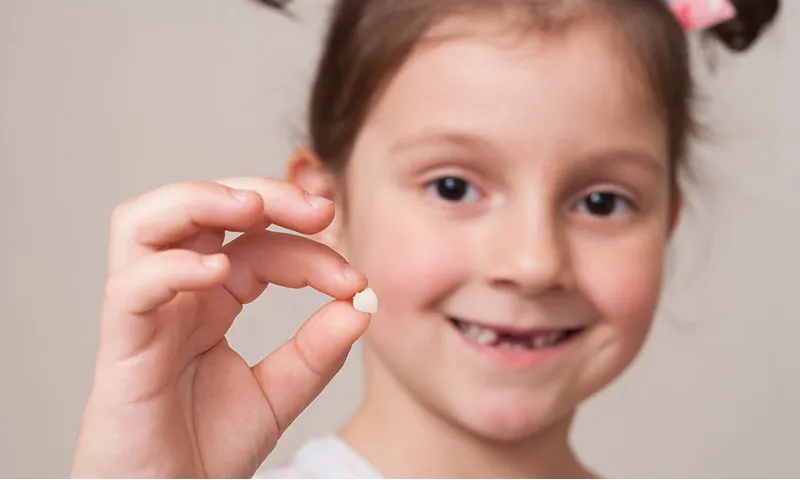 Swiss premium oral care
Swiss premium oral care
 United Arab Emirates
United Arab Emirates
Baby & Kids Toothbrushes
Tiny teeth deserve big care. Our baby & kids toothbrushes have soft bristles, fun colours, and ergonomic designs that make brushing easy and joyful from the very first tooth.
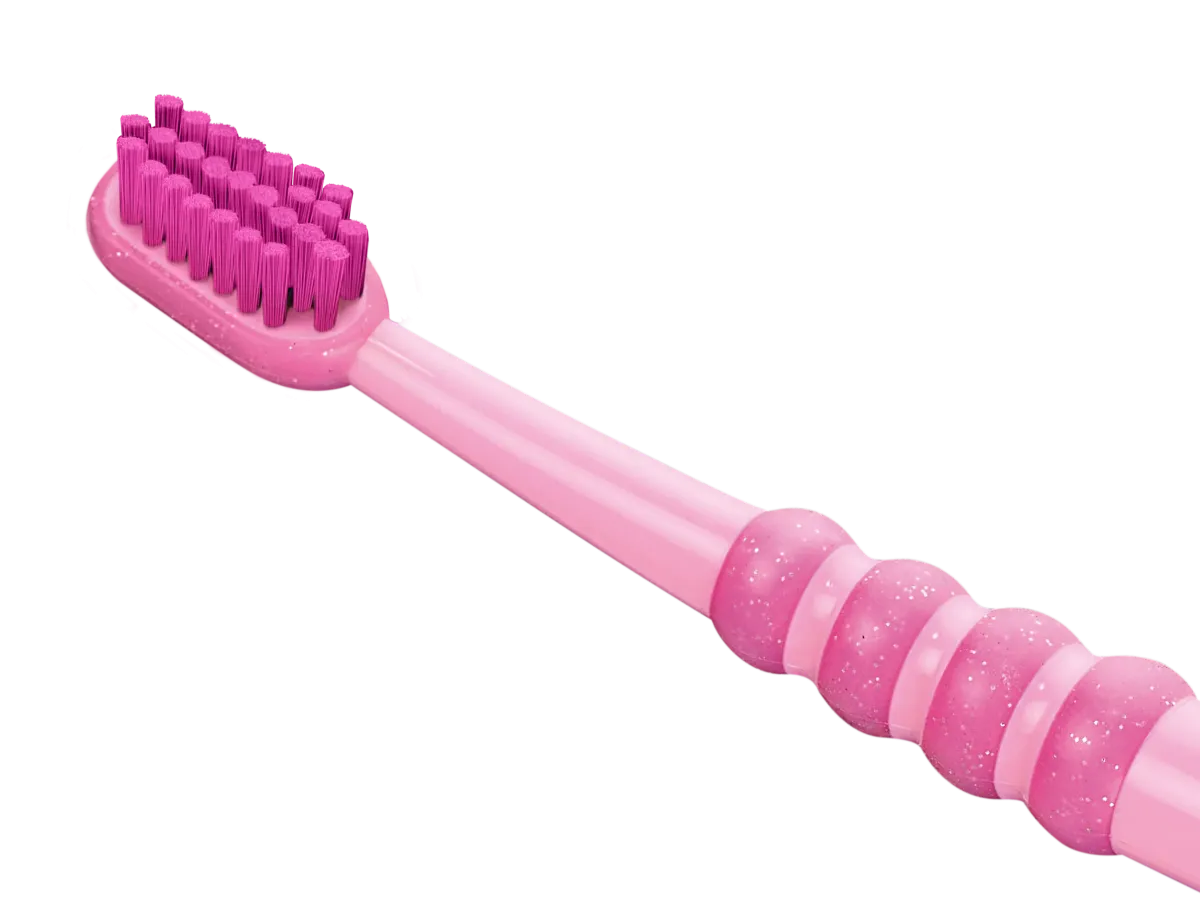
11 of 11 products
Children's toothbrush Kids Graffiti Edition
How to brush baby’s and children’s teeth correctly?
Brushing teeth with the offspring is a vital and non-negotiable routine as those tiny teeth play a major role in your child’s development. Here’s how it works best.
Milk or baby teeth have several crucial functions. They play an important role when it comes to eating, chewing, and speaking. Therefore, these tiny teeth need a lot of care. As children get their adult teeth quite young–starting at the age of 6, and these are the teeth that are meant to stay with them forever–, introducing positive oral hygiene habits is very important. These good habits are shaped by you and will stick with your child until adulthood.
Why is brushing so important?
Tooth decay aka caries is one of the most common chronic conditions in childhood, affecting about 20 percent of kids between 5 and 11. Cavities can have a harmful effect on overall health later in life. Therefore, oral hygiene can and should start very early–even before the baby has their first teeth.
How to clean and brush
After (breast)feeding, wipe baby’s sensitive gums with a soft, clean, and wet washcloth to prevent bacterial growth, as breast milk and formula contain sugar.
Brushing with babies
As soon as the first tooth erupts, it’s time to start brushing. Ideally, opt for a super-gentle baby toothbrush. Babies don’t like hard bristles as they irritate or even hurt the sensitive tissue on the mouth. Apply a rice grain-sized amount of kids toothpaste with an age-appropriated fluoride level on the brush head–preferably on our super-gentle baby toothbrush and get started. Now brush with small circles and clean the tiny teeth thoroughly and with care.
Brushing with children
From 6 years of age, children can change to a kids toothbrush. The brush head is a tad bigger, and it has more bristles; the toothpaste contains more fluoride and also comes in different flavours. Ideally, a child brushes three times a day for two minutes each time. It is best if kids brush their teeth in the morning, at lunchtime, and in the evening straight before hitting the bed. As young children just scrub their teeth and their dexterity does not yet allow them to perform precise brushing techniques, parents should assist and supervise the brushing—preferably until the age of 10. The easiest way to get children to regularly brush their teeth is by turning brushing time into a fun activity. For more tips, see FAQ: How do I get my child to enjoy brushing?
Babies don’t need a toothbrush until they have all their teeth
Often, parents assume that they only need to brush their child’s milk teeth once they have several or all of their teeth.
This is a widespread assumption–but unfortunately incorrect. Milk or baby teeth need a lot of care, ideally with a soft baby toothbrush. Parents who think that it’s not a big deal if children don't brush their teeth twice a day because they will lose those baby teeth anyway are wrong, unfortunately. By not brushing, children can experience severe problems like eating or speaking issues, tooth decay, pain or discomfort, and problems with their permanent teeth. Plus, not brushing at a young age can set up bad dental hygiene habits in the future.
Which toothpaste to use for babies and kids?
Toothpastes for adults are not appropriate for babies and toddlers. The little ones might refuse to open their mouth and to cooperate as they dislike the strong mint or menthol taste.
Therefore, valuable and beneficial ingredients are crucial for a children’s oral health and development of good brushing habits. A baby and children’s toothpaste should be well-balanced, fruity, mild, and definitely free of SLS, microplastic, triclosan, and other naughty stuff.
Why fluoride?
Thanks to improved oral hygiene, healthier eating habits, and the widespread use of fluoride in toothpastes, tooth decay in children has decreased noticeably in recent years. Fluoride is an important mineral that hardens the tooth enamel making it more resistant to acid, thus preventing tooth decay and cavities. It also helps in remineralizing weakened enamel.
The following dosage for fluoride-containing toothpastes for children are recommended by the EAPD, the European Academy for Paediatric Dentistry:
- Babies, from the first tooth to 2 years of age: brush twice a day with a rice-grain sized amount of children’s toothpaste (1.000ppm fluoride)
- Toddlers from age 2 to 6 years: brush 3 times a day with a pea-sized amount of children's toothpaste (1.000ppm fluoride)
- Children 6 years and older: brush three times a day with a pea-sized amount of toothpaste for adolescents (1.500ppm fluoride)


